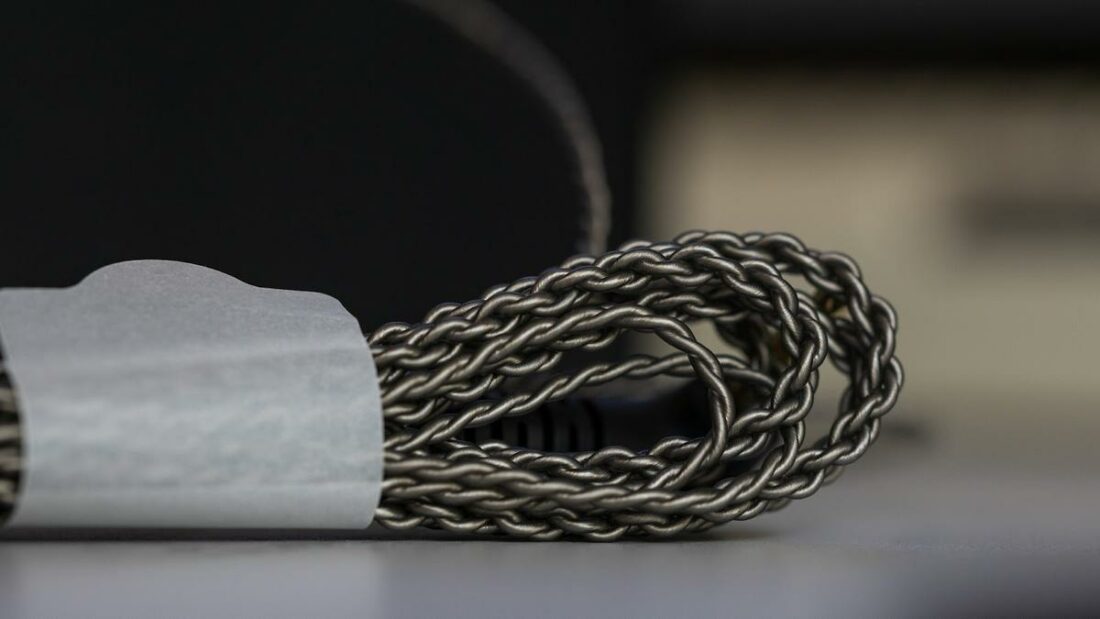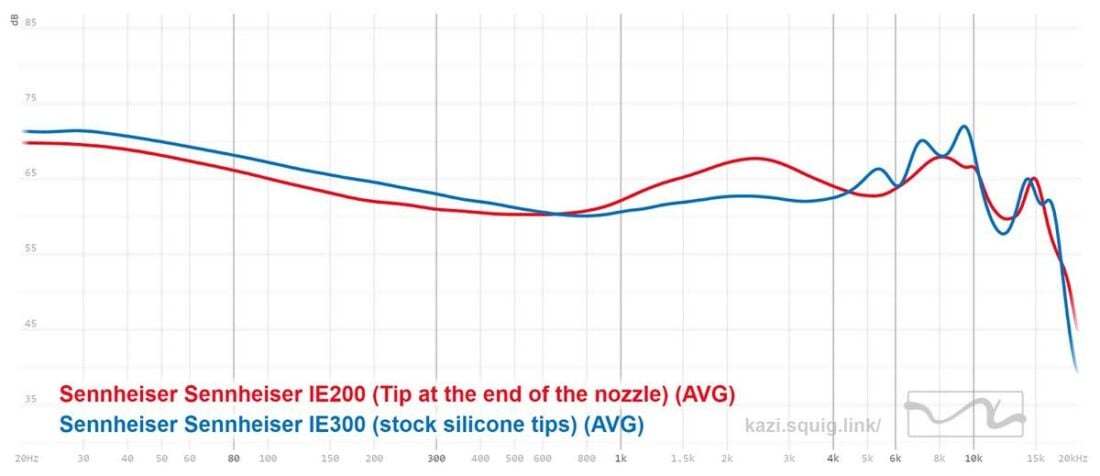Sennheiser’s latest IEMs, aiming to be crowd-pleasers, hit the mark gracefully.
Sennheiser’s venture into IEMs has not had the same adulation and adoration as its headphones lineup.
Granted, the IEM releases have been few and far between for years. Additionally, the lower-end offerings needed more to distinguish themselves amidst fierce competitors who offered more for less money.
- Class-leading comfort, very ergonomic
- Stock accessories are good enough to get you going
- Two different tuning profiles, both of them exceptionally executed
- Very balanced tonality without a hint of harshness
- Excellent timbre
- End-to-end extension
- Good separation for a single-DD
- Soundstage height belies the size of the IEMs
- Stock cable feels cheap and aftermarket cables are difficult to source
- Sub-bass boost can get a tad too much on some tracks in bass-boosted mode
- Stock tips might not suit everyone
- Tuning might lack the excitement and engagement for some
- Stage depth and width are average
- Imaging could be more precise
- Needs above-average amplification
The IE 200 intend to change all that. They are priced competitively, utilize the same driver platform as the flagship IE 900, and measure remarkably well.
Impressive on paper, but do they translate well into the real world? Let’s find out.
Technical Specifications
- Form: IEM
- Drivers: 1 x 7mm TrueResponse dynamic drivers
- Impedance (Ohm): 18 ohms
- Sensitivity (dB): 119 dB/V (101 dB/mW)
- Frequency Response (Hz): 6 Hz – 20 kHz
- Total Harmonic Distortion (THD): <0.08%
- Removable Cable: Y
- Source Jack: 3.5mm
- Cup/Shell Jack: mmcx
- Weight: 4g (per earpiece, without tips)
Packaging
Sennheiser usually opts for no-nonsense packaging, and the IE 200 are no exception.

In the box
- Sennheiser IE 200 IEMs
- 3 pairs of silicone tips
- 3 pairs of foam tips
- PU leather pouch
- Braided cable with MMCX connectors and 3.5mm plug
The presentation is appropriate for a pair of IEMs in the USD$150-$250 range. The accessories are decent, albeit cost-cutting is evident in places. The carrying pouch is made out of PU leather and offers minimal protection. It is adequate for storing the IEMs with the cable only.

The stock cable is my bone of contention.
.
The stock cable has a stiff sheathing, forms kinks, and holds on to those bends for dear life. This cable looks better in pictures than in hand, and that’s a shame.
The memory wire near the earpieces is another annoyance. Sennheiser’s choice of malleable wire has its pros and cons (e.g., constantly bending out of shape), and the latter outweighs the former for me. This particular cable is also very prone to touch noise.
Moreover, the cable had a strong chemical odor upon unboxing. That smell has mostly subsided after three weeks, but it’s not entirely gone. Others have reported similar experiences in various forums. Your mileage may vary.

The stock tips are good enough to get you started, and the silicone tips work well for me. The stock tips also allow for two different tunings – more on that later.
As always, with ear tips, I highly encourage experimentation with third-party alternatives for the best fit and sound. Do note that you need to use the stock tips to maintain the tuning ability.
Design
The IE 200 are some of the lightest IEMs around.
This remarkable lightness (4g/side) is achieved by using a plastic shell. Despite being all plastic, the IE 200 feel well put together.

The left earpiece has the model number embossed on it.
There are two vents: the front vent is part of the nozzle itself, which is covered by the tips when they are pushed all the way back. Another vent is beside the Sennheiser logo on the back of the shell.

Sennheiser uses recessed mmcx ports that are not compatible with many third-party cables. The IEMs rotate freely along the cable joint, but this should not raise any concerns about durability.

Great build quality despite the not-so-premium materials.
Comfort and isolation
Comfort is exceptional – the IE 200 almost disappear while wearing them.
I love IEMs that are barely felt when wearing, and the IE 200 are one of those rare breeds. The ergonomic shell, coupled with the low-profile fit and light weight, offer class-leading comfort.
Noise isolation is above average with the silicone tips and can be further enhanced by using the supplied foam tips.
Internals
Sennheiser IE 200 utilizes a single dynamic driver to cover the entire frequency range.
The folks over at Sennheiser have always been “purists” about driver type in their IEMs, and they seem convinced that a single dynamic driver is the best way to do things. There is merit to this ideology as an “ideal” dynamic driver eliminates all the issues (i.e., phasing, lack of coherency, etc.) pertaining to multi-driver or hybrid setups.
The 7mm “TrueResponse” driver has very low Total Harmonic Distortion. This makes the IE 200 ideal for high SPL listening and EQing. The diaphragm is polymer-based, which can mean several things, including PET, PEEK, and such. Sennheiser does not explicitly mention the diaphragm material.
Tuning
For tuning the IEMs, Sennheiser makes extensive use of the nozzle. The IE 200 use a damper within the nozzle to smooth out peaks.
The nozzle also has a vent that controls airflow. Exposing this vent (by shifting the tips forward) reduces bass frequencies since they escape outside the sound tube before even reaching the eardrum.

Similarly, pushing the tips down to block this vent allows low frequencies to reach the eardrums without attenuation, resulting in increased bass response.

A rather ingenious tuning solution that provides two different sound signatures by merely moving the ear tips. Well done, Sennheiser!
Sennheiser IE 200 Sound
Depending on tip position, the IE 200 sound can be characterized as either “bass-boosted neutral” or “bright-neutral.”
Both tip positions are useful for different purposes. The bright-neutral tuning helps in live feed monitoring, while the bass-boosted one is more general-purpose and better for listening to music and watching movies.

Bass
Bass has good rumble and mid-bass punch, but the texture is somewhat lacking. This is evident in tracks with subtle shifts in sub-bass notes, where notes that should reach “deeper” keep sounding monotonous. Case in point: Counting Crows’ A Murder of One.
On the plus side, the bass has good speed and does not bleed into the lower-mids in the bright-neutral mode (which is relatively close to the DF-neutral target). The mid-bass is not perfectly flat in the “bass-boosted” mode and imparts some warmth into the lower-mids. It’s a pleasant coloration, however.
Overall, I am very pleased with the low-end performance of the IE 200. Some planar IEMs in this price range offer a more robust sub-bass, but the IE 200 offer a more physical mid-bass punch that evens the odds.
Midrange
The midrange tuning on the IE 200 is remarkably well-done.
Male vocals sound full with just the right amount of weight to baritone vocals. You can shift the tips forward for further vocal clarity, and the mids sound remarkably clean.
Strings have a sharp leading edge with the neutral-bright profile, as heard on Damien Rice’s Canonball. In bass-boosted mode, strings reverberations are highlighted, resulting in a smoother attack and denser note weight.
I regularly swapped between these different “tuning profiles” for the same track and found a different-yet-enjoyable rendition with almost every track in my playlist – a brilliant job by Sennheiser.
Treble
The treble is inoffensive without being dark or muted.
In the bass-boosted profile, the treble is smoothly rolled-off with a subtle boost near 15kHz to add some air into the mix.
The bright-neutral profile has a more substantial lower-treble boost, not unlike the Sennheiser HD560S. However, the boost is better controlled on the IE 200, resulting in increased transparency without fatigue.
The highs are not tuned to bombard you with details and upper-harmonics, so if those are the priority – the IE 200 will disappoint. If you appreciate natural-sounding highs, these will align with expectations.
Soundstage and imaging
The soundstage does not feel noticeably wide or deep, but it’s not cramped or narrow by any means. What the IE 200 do really well is the depiction of stage height, which is surprising given the small driver and shell.
Imaging is mostly left and right, with instruments not being placed convincingly in ordinal directions.
Dynamics and speed
Macrodynamic punch is somewhat lacking in the neutral-bright tuning profile, but the bass-boosted profile offers very good dynamics, given the price point.
Microdynamics are better rendered in the bright-neutral profile, as the extra sub-bass masks low-level details and subtle shifts in volume when using the bass-boosted profile.
Comparisons
Vs Sennheiser IE 300
Sennheiser IE 300 retail for almost twice the price of the IE 200, but they are often on sale for below the IE 200 retail price.
In terms of build, the IE 300 feel slightly more premium in hand and come with much better stock cable and carry case. The tips are similar between the IEMs, but the IE 300 lack the “tuning” mechanism of the IE 200.

In terms of the sound, these IEMs venture into opposite directions. The IE 300 are decidedly V-shaped in tuning, with none of the upper-mids presence that the IE 200 exhibit, nor the flat bass of the IE 200 in their bright-neutral profile.
The treble region has noticeably more sparkle and brilliance in the IE 300, and the bass hits harder, stronger, with more noticeable rumble. The highs have a metallic sheen to them though which can feel jarring at times.
The soundstage is wider on the IE 300, while imaging is slightly better. Mids are noticeably better on the IE 200 for my tastes, with better vocal clarity and articulation, devoid of the “haziness” that the IE 300 mids exhibit.
Overall, I like the IE 300 for modern genres since they tend to sound more engaging with compressed tracks. IE 200, meanwhile, sound exceedingly natural no matter what you throw at them, and the different tuning profiles are added cherries on top.

Where to Buy
Conclusion
Sennheiser’s IE 200 did not enamor me at first, I will admit. I found them somewhat generic sounding upon a quick listen, although the natural voicing was apparent from the get-go.
After giving them their due time, I have grown fond of the IE 200, and nowadays, I end up using them more than any other IEMs in this price bracket.
Sennheiser has struck a nice balance with the compromises they made to offer the IE 200 at a lower price. The stock cable is cheap but serviceable. The packaging is barebones but holds the essentials. The shell is plastic but robust enough to take a beating.
Add Sennheiser’s 2-year warranty policy and excellent customer support, and suddenly the IE 200 feel like an investment you are unlikely to regret as long as you know what you are getting.
I highly recommend the IE 200 to those who want a natural tuning without hyper-boosted bass or treble and those who value the little things and the subtleties.

You should have a look at the Sennheiser IE 100 Pro. With Final E tips these are one of my favourite IEMs. I prefer them over IE 200 and IE 300.
Thanks for the suggestion. Those will be covered in a future review.
ew200 vs ie 200?
IE 200 of course. Much better timbre and better lower-midrange reproduction.